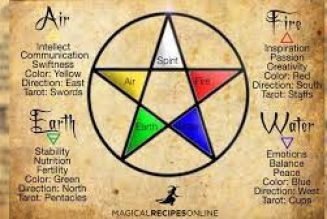Solitary Pagan Rituals are a form of spiritual practice that involve performing rituals alone, rather than in a group or coven setting. These rituals can be performed in a variety of settings, from a private room in one’s home to a secluded outdoor location. Solitary Pagans often use these rituals to connect with nature, honour deities, and celebrate the changing of the seasons.
One of the benefits of solitary ritual is the ability to customise the experience to suit individual needs and preferences. Solitary Pagans can choose the timing, location, and format of their rituals, as well as the specific deities or spirits they wish to work with. This level of personalisation allows for a deeper connection to the divine and a more meaningful spiritual experience.
However, solitary practice can also present challenges, particularly for those who are new to Paganism or have limited access to resources and community support. Without the guidance and support of a group, it can be difficult to learn the nuances of ritual practice and develop a deeper understanding of Paganism. Despite these challenges, many Pagans find that the benefits of solitary ritual far outweigh the drawbacks, and continue to practice alone throughout their spiritual journey.
Simple Ritual
The Solitary Pagan Ritual is a personal experience and can be tailored to the individual’s preferences. Here is an example of a simple ritual that can be performed alone:
Preparation
Before the ritual, it is essential to prepare the space. The individual should choose a quiet and comfortable area where they can focus without distractions. They can decorate the area with candles, crystals, or any other items that hold personal significance.
Invocation
The individual can begin the ritual by invoking the elements and deities they wish to work with. They can light a candle to represent each element and call upon its qualities. For example, they can light a red candle for fire and call upon its transformative power. They can also invoke the deities they wish to work with, such as the goddess of love or the god of wisdom.
Meditation
After the invocation, the individual can meditate to connect with their inner self and the energies they have invoked. They can use guided meditation or simply focus on their breath. This step can be as long or as short as the individual desires.
Offering
The individual can make an offering to the deities they have invoked. This can be a physical item, such as a flower or a piece of jewelry, or a symbolic gesture, such as pouring water into a bowl. The offering represents the individual’s gratitude and respect for the deities’ presence.
Closing
To close the ritual, the individual can thank the elements and deities they have invoked and release their energies. They can blow out the candles or let them burn out on their own. It is essential to ground oneself after the ritual, such as by eating a snack or taking a walk outside.
This simple ritual can be adapted and expanded upon to suit the individual’s needs and preferences. It is a way to connect with oneself, the divine, and the natural world.








